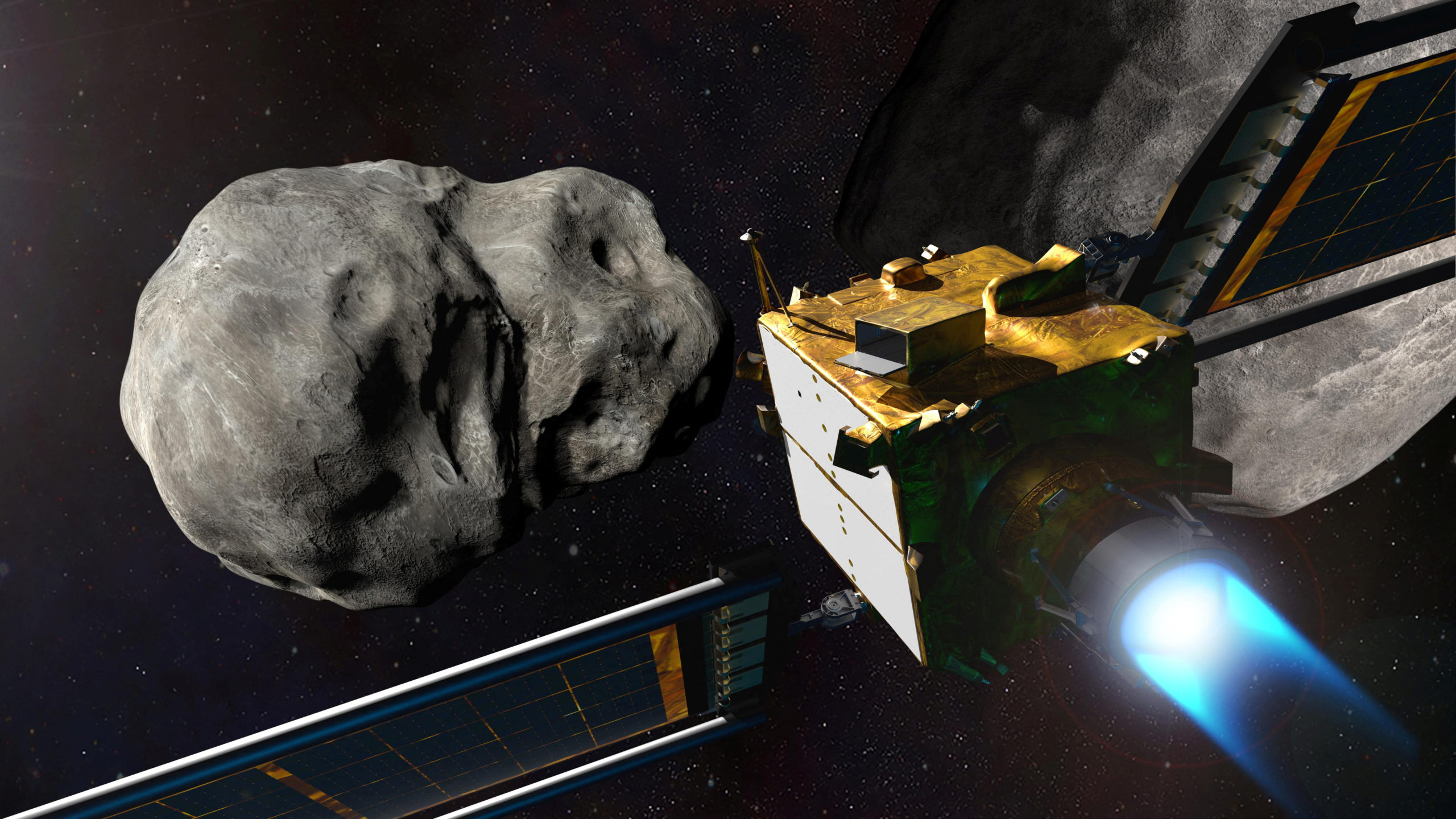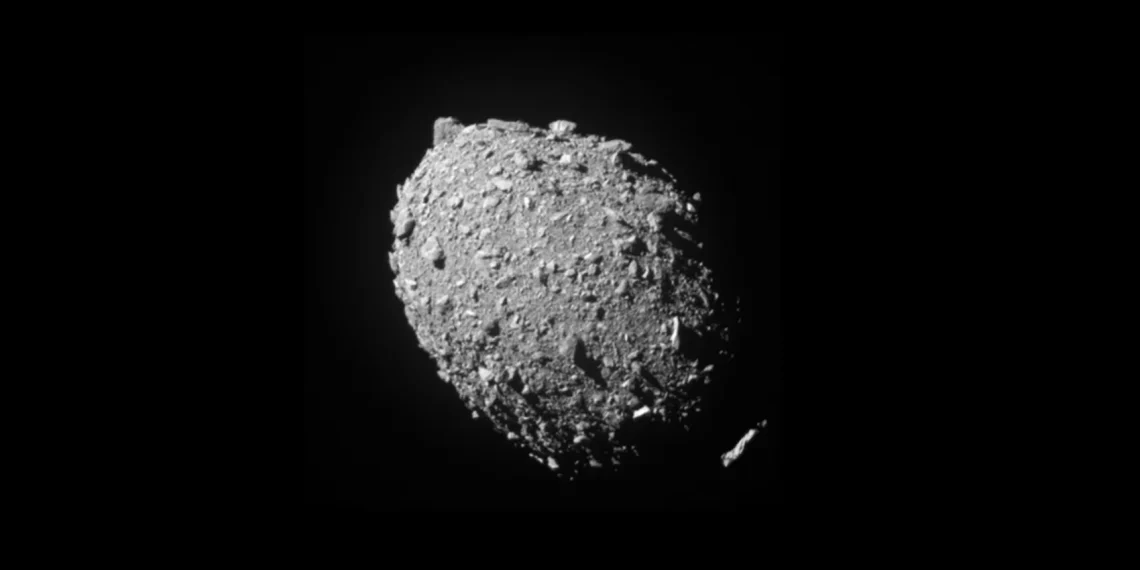When NASA’s DART spacecraft collided with the asteroid Dimorphos in 2022, it not only altered the asteroid’s trajectory but also its shape, transforming it from a ball to a watermelon-like form, scientists reported.
The collision demonstrated NASA’s ability to change the course of a celestial object, showcasing the potential to protect Earth from potential threats.
Dimorphos, previously resembling a slightly chubby ball, now appears as a triaxial ellipsoid due to the collision’s impact. This dramatic change in shape was attributed to Dimorphos’s loose, rubble-pile composition, making it susceptible to deformation.

The collision also affected Dimorphos’s orbit around Didymos, transitioning it from a circular to an elliptical path and shortening its orbital period.
The DART mission aimed to redirect Dimorphos, a moonlet of the larger asteroid Didymos, which posed no direct threat to Earth. The spacecraft slammed into Dimorphos at 14,000 miles per hour, sending rocky debris into space and altering its orbit.
Post-impact observations revealed a decrease in Dimorphos’s orbital distance from Didymos and a reduction in its orbital period.
Researchers monitored Dimorphos’s shape and orbit using ground-based telescopes, radio wave data, and images from the DART spacecraft.

The study provided valuable insights into the effects of kinetic force on asteroid dynamics and offered precise measurements of the changes induced by the collision.
The findings underscore the significance of planetary defense strategies and highlight the potential of kinetic impactors in mitigating asteroid threats. NASA anticipates further exploration of the Dimorphos-Didymos system with the European Space Agency’s Hera spacecraft, slated to launch in October.
The Hera mission aims to provide additional data on the asteroids’ shapes and orbits, enhancing our understanding of these celestial bodies.





